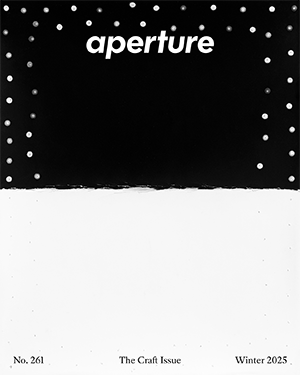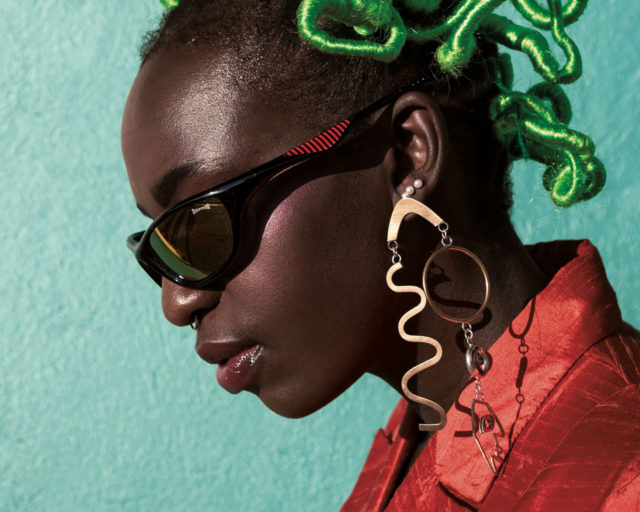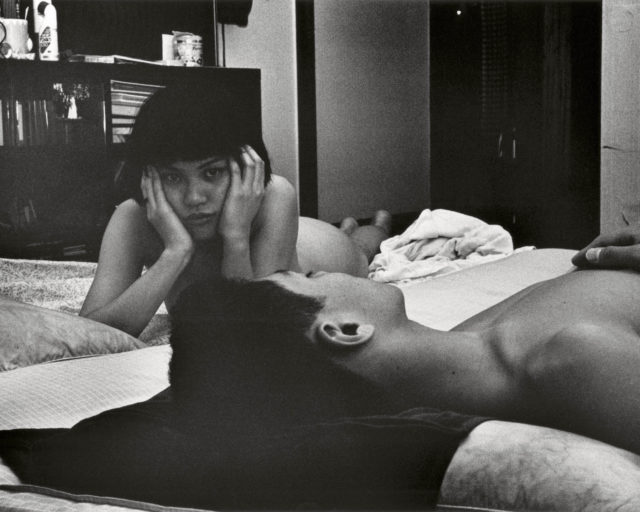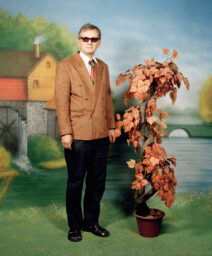Michael Marcelle's Surreal New Jersey

Michael Marcelle, Sister Smile, 2015
Courtesy the artist
As the photographer Gregory Crewdson notes in his afterword to Kokomo (2017), Michael Marcelle’s new photobook, when faced with trauma, “reality never feels ‘real’ in the same way again.” It would be easy to read Marcelle’s images as indices of some mental strife or survivor’s guilt, with their brightly lit and grotesque interiors reminiscent of a Roman Polanski movie screened in a West Hollywood gay bar.
Kokomo emerged in the wake of Hurricane Sandy, and although Marcelle’s childhood home in Belford, New Jersey was not destroyed by the October 2012 storm, the surrounding community was devastated. This biographical narrative notwithstanding, Kokomo also makes a statement about constructed photography. Marcelle’s work follows that of Crewdson, Laurie Simmons, Roe Ethridge, Sue de Beer, and Jimmy DeSana; yet, as with the best young photographers working with tableaux (like Cynthia Talmadge or Tommy Kha), there is something idiosyncratic and personal that resists pure imitation. There is something entirely unique, for example, in Marcelle’s relationship to queerness; it is restrained, coy even, but wildly evocative like the weepiest melodrama.
By coincidence, as I prepared for this interview last month, massive fires raged in Northern California, where my parents’ house was among the few untouched (homes only a half-mile away were destroyed). I imagine, to quote The Sound of Music (1965), that the Marcelle and Simmons families must have done something good, perhaps in another life.

Michael Marcelle, One Month Before, 2012
Courtesy the artist
William J. Simmons: Your book begins with text, and many of the images have a narrative/lyrical presence that implies a potential story. Of course, there is the reality of Hurricane Sandy, but I am also thinking of unseen stories. How do you engage with the history of photography as both a fragment of the real and a space of imagined projection?
Michael Marcelle: The text that you mention is lyrics from the Beach Boys song “Kokomo,” which have been redacted and given a new context, accentuating the ominous non-space of the hallucinatory seaside utopia described in the song.
I’m interested in keeping the connection between fantasy and reality in these pictures in a very tenuous and uneasy state. It would’ve been incredibly boring and problematic to document the aftermath of this storm in a “real” way. So, instead, I used my own personal experience as an anchor to create something new out of the destruction rather than simply record it. I wanted to see how far I could abstract my own family’s narrative into something alien, yet also deeply personal, something that could act as an echo to the devastation. How far could the personal be pushed into oblivion?

Michael Marcelle, One Year Later, 2013
Courtesy the artist
Simmons: Constructed photography—I’m thinking of Robert Mapplethorpe, Jimmy DeSana—and portraiture by artists such as Catherine Opie, have been privileged media for queer people, perhaps as a result of some desire for the “real” of the photograph when homophobia has denied this kind of connection to representation. And you are engaged with each of these photographic lineages. Yet, refreshingly, there is nothing in Kokomo that explicitly or obviously enunciates queerness. Where might you locate a queer sensibility in your restrained combination of multiple modes of photography?
Marcelle: I’ve always viewed the queerness in my work as acting on a psychic, almost supernatural level. The earliest connections I can recall having with queer culture have less to do with my own sexual desires and more with glimpsing into a secret, strange world. Growing up as a fat, stuttering, gay, goth kid in New Jersey, my own queerness became inexorably linked to what I found escape in: the cheap spectacle of VHS genre films, the pageantry of Marilyn Manson, the occult world-building of Kenneth Anger. Queerness was a feeling, a sense of color, light, extremity, and horror. In my photographs, I’m just trying to emulate that feeling, to describe that world over and over again.
I think there’s a predominant sensibility in a lot of art made by gay men that sets up a more traditional relationship between the male body and the inherent desire within as the point of queerness in the work. But in my photos, I’m trying to create an entirely queer world, where everything is charged with a feeling of otherness, of a throbbing strangeness. I think that lends itself to slipping between modes of picture making while still being able to maintain an aesthetic continuity. I don’t see a difference between a portrait or a still life or a landscape, so I try to fill each picture with the same potency.

Michael Marcelle, Poinsettias, 2015
Courtesy the artist
Simmons: I’m intrigued by the idea of the uncanny here—people often use that term for photographs that just “look” surreal, but here I think you’re actually working with the term as it was defined—something both strange and familiar, something intimate and distant that bursts into our everyday consciousness. One of the few other artists who managed to do this is Cindy Sherman—not only in her “disaster” pictures from 1986–89, but even in her film stills, where we work constantly and in vain for figure out the movie that we “know” we’ve seen before.
Marcelle: I would say the sense of uncanniness in these photographs is driven by a desire to subvert the typical structure of the home-based photography genre, where the artist presumes their life is inherently interesting enough to make work around it. I don’t think I’m particularly interesting on a personal level, so rather than focusing on the specific details of my life or my family, I focused on the act of picture-making itself, which I found incredibly freeing. I wanted to decontextualize the familial and the banality of the suburbs into something utterly strange and hallucinatory, with family members in constant states of mutation and landscapes slipping in and out of consciousness.

Michael Marcelle, Our Backyard, 2013
Courtesy the artist
Simmons: In Camera Lucida (1980), Roland Barthes discusses at length a photograph of his mother who has passed, but he refuses to reproduce the photograph, which instills a sense of nostalgia that we as readers or viewers cannot access. But we are learning every day—as with the Charlottesville white supremacist march, in August—that looking back in time or longing for the past is rarely, if ever, progressive. I still find myself nostalgic for nostalgia—a longing that once seemed harmless. What is your relationship to nostalgia?
Marcelle: A lot of my interest in the uncanny has to do with nostalgia, which I’ve always considered as basically synonymous with death, only in a more narcotic, saccharine form. The pictures in Kokomo are drenched in a kind of inverted, uncanny nostalgia, where the past, present, and future have merged, so death is looming over everything. I started the project as a way to describe the feeling of coming home to a world that had turned upside down, but as time went on the focused changed to ultimately be more about family and death.
When I was in grad school, the dean sat in on one of my early crits. He was really not feeling the work at all, and said that the pictures felt like work about magic that was made by someone who doesn’t believe in magic. He clearly meant it in a negative way, but I actually think it’s one of the most accurate descriptions of my work I’ve ever heard. My work is about using all these cheap special effects and theatrical lighting as a way to hide from death, to reach, but ultimately miss, immortality.
Kokomo was published by MATTE Editions in 2017.

























